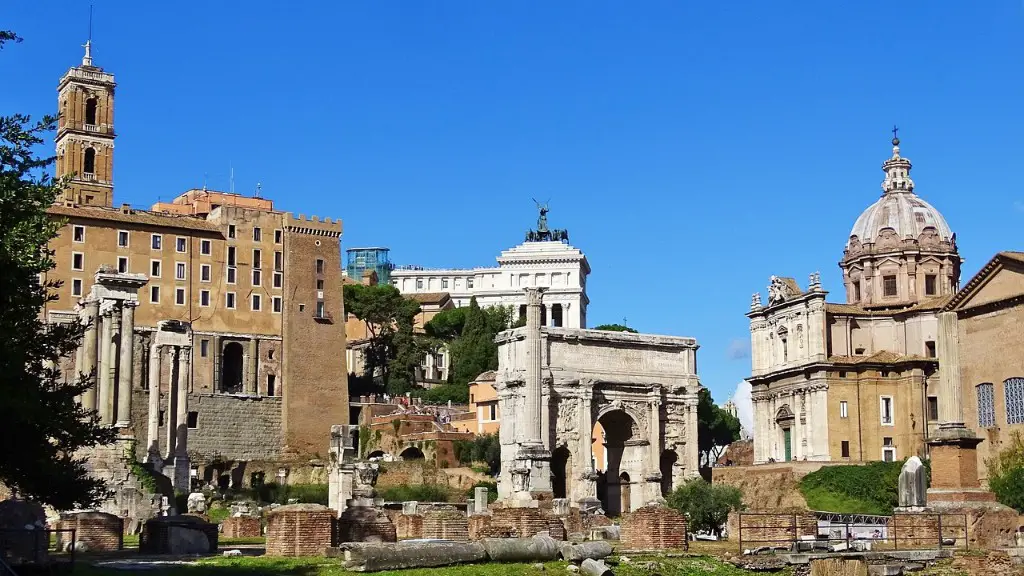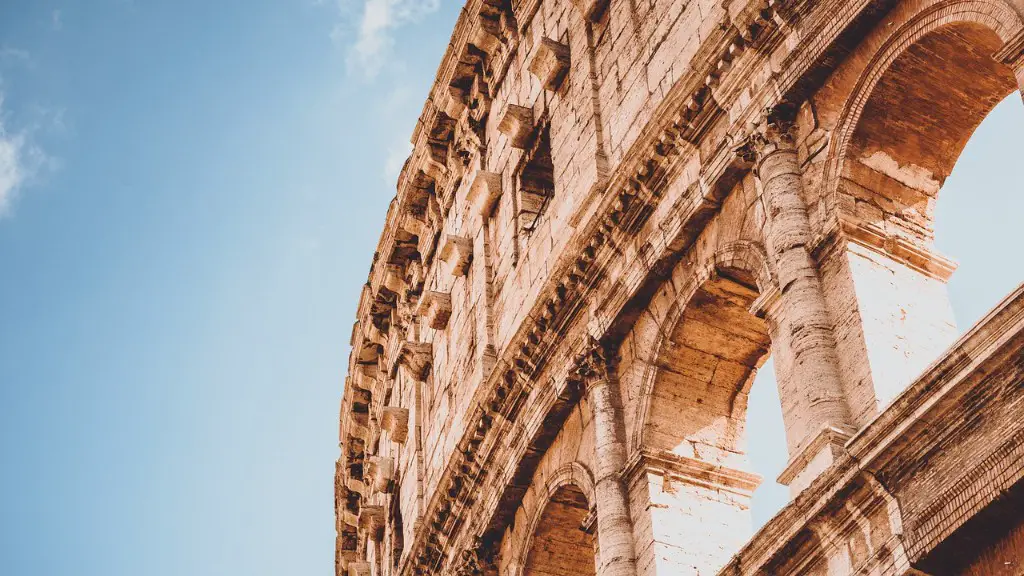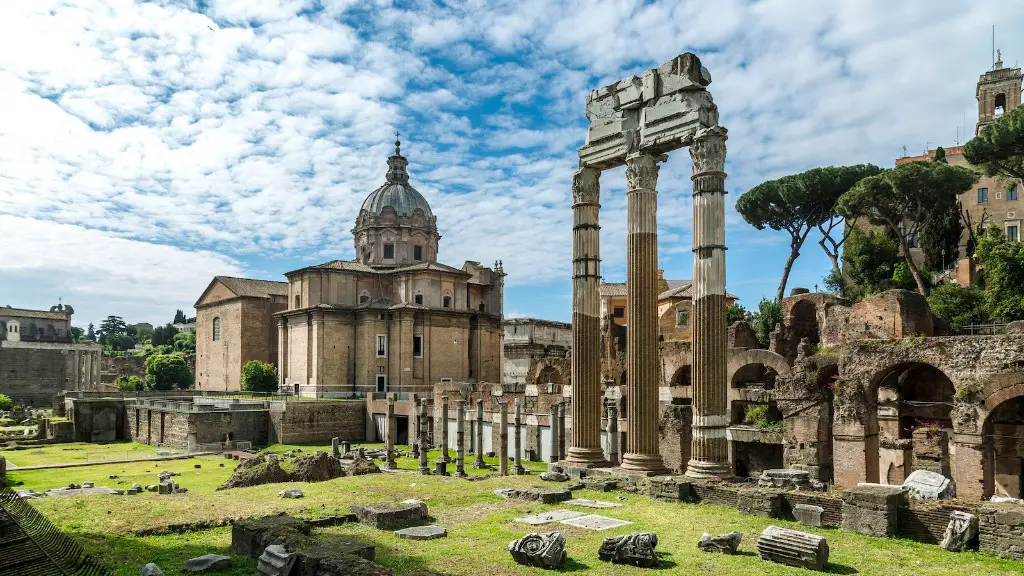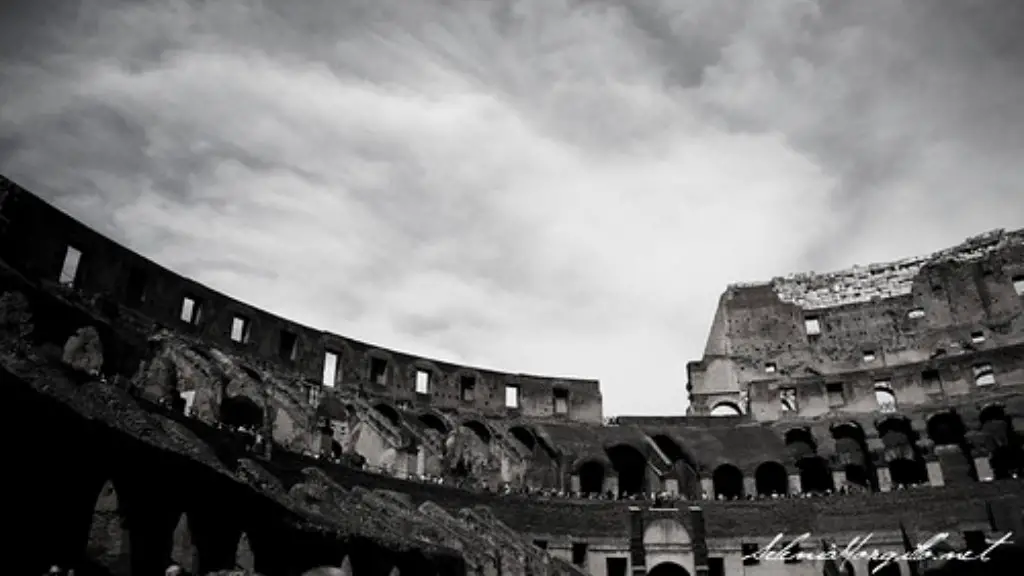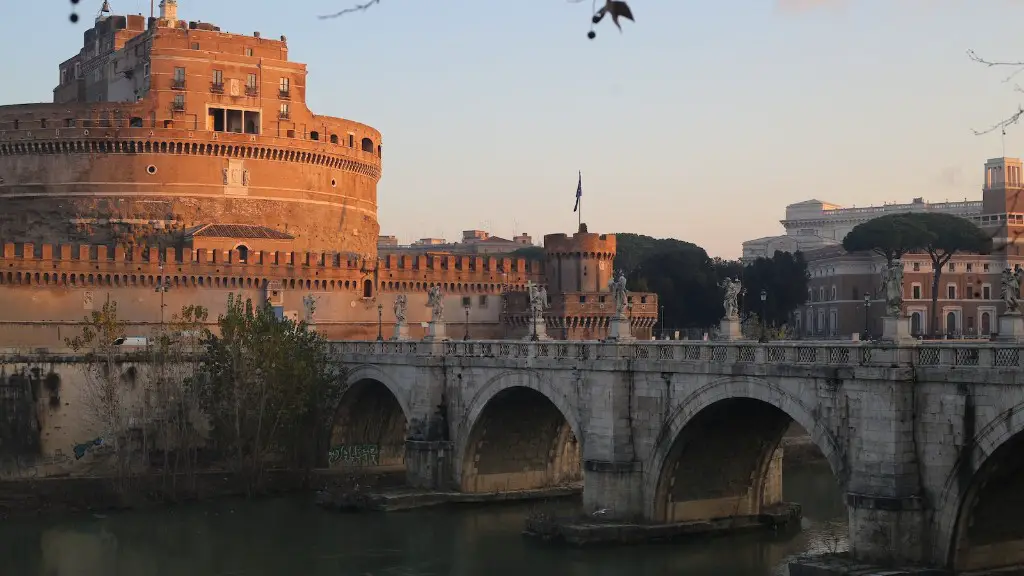Foods Served at Banquet in Ancient Rome
The banquet was an essential part of life in ancient Rome, whether it was to commemorate a special occasion or to celebrate a holiday. The food served at these feasts was not just simple, but often extravagantly prepared. The Romans were known for their banquets as much as for their impressive architecture and engineering. To understand Roman feasts and their cult of eating, it is important to know what food was served at banquet in ancient Rome.
In Roman times, there was an abundance of foods from which to choose when hosting a banquet. One of the first courses were the gustae, which were appetizers composed of fruit and other snacks. They might include freshly picked apples, figs, melons, walnuts and dates. Other dishes served in gustae were olives, mussels, roasted snails and a variety of vegetables. Even more luxurious ingredients, like peacock brains and nightingale tongues, would also be served. Fishes, including shellfish like oysters and mussels, were also popular. For larger and more important events, roasts would be served as well, including wild boar, venison, and pigeon, as well as different kinds of poultry and game.
At the time, there was much more of a focus on the preparation and presentation of the food than there is today. Myriad cooks and chefs were employed to prepare banquets, and often it was their task to come up with new and exotic dishes for the feasters. Meats were often salted, smoked, or pickled, and the fish were marinated or cooked in wine or oil.
The food that was served at banquets was often accompanied by a wide range of drinks. Ancient Romans would drink wine at their feasts, and the wines were often watered down to reduce the strength. There were also many other drinks, including mead, a fermented honey-based drink that was popular at the time.
Additionally, it was customary to have a dessert course at the end of the meal. These desserts could include fruits, nuts, and honey, as well as sweet pastries made of rice and cheese. As a final treat, fermented grape juice was often served, which the Romans favored.
Ultimately, the foods served at banquet in Ancient Rome give an insight into their culture and diet. The ancient Romans enjoyed an opulent lifestyle, and this is evident in the foods that were served at banquets. Even in today’s modern world, many of the dishes served at banquets in ancient Rome can still be enjoyed.
The Use of Spices in Cooking
Spices were an essential ingredient in Roman cooking. The abundance of herbs and spices available at the time enabled the Romans to expand their culinary palette and experiment with a range of flavors. Common spices used in Roman feasts included coriander, pepper, cumin, and cilantro. The spice mixtures used in seasoning dishes was called the conditum, which included a combination of ground pepper or dill, garlic, parsley, and mint. These spices were used to flavor roasts, sauces, and soups, as well as marinades for fish and shellfish.
Herbs were also a popular ingredient in Roman cooking, and were used to make flavourful sauces, such as the garum, a paste made from fish entrails and herbs. Rosemary, thyme, oregano, and basil were also used to top fish dishes, as well as to season roasts. Wine was also commonly used as a flavoring in dishes.
The abundance of spices and herbs available in the Roman empire enabled chefs to create a whole range of different flavors and dishes. The use of spices in Roman cooking allowed chefs to experiment and create more complex dishes. The availability of different spices further enabled the Romans to create dishes that would have been unfamiliar to many other cultures.
The Role of the Host in Ancient Rome
In Ancient Rome, the host of the banquet had a key role and they were responsible for organising and running the event. The host had to decide what food and drinks would be served, as well as who was invited to the banquet. The host also had to make sure that all guests had enough to eat and drink, and the food needed to be served at the right time and in the right quantities. The food was often lavishly prepared and had to meet the exacting demands of the guest. This was an incredibly important role and much was expected of the host.
The host was also required to create an atmosphere of ease and comfort for their guests. This was done by selecting particular music or entertainment to set a certain mood. Old Roman banquets, in particular, were renowned for their allusion to luxury and debauchery. The host, too, often set the tone and was responsible for creating the ambience.
In addition, the host often provided entertainment in the form of actors and musicians. Ancient Roman banquets were known for their entertainment, and this often included theatrical performances and recitations of poetry. Even more elaborate feasts included jesters, magicians, jugglers and gladiators. All of these elements combined together to make the banquet a truly special occasion.
The Dining Habits of Ancient Rome
The dining habits of the Romans were quite different from the way that we eat today. For example, the ancient Romans were known for their extravagant feasting, where the emphasis was on decadence rather than on nutrition. At the same time, there was also a greater focus on manners and etiquette. It was expected that guests behaved in a dignified manner during the meal and that words were only spoken when necessary.
In addition to this, the Romans generally ate with their hands, rather than with utensils, and it is said that they even drank their soups in this manner. Eating was also seen as an art form and the host of the banquet would usually decide the seating arrangement and the order of the dishes that were served.
In ancient Rome, dining was a complex and sophisticated affair and the diners often showed their social standing and wealth through their food and the way they ate. In this way, food was used to signal status and show off to fellow guests, as much as it was to satisfy hunger. This is a stark contrast to the way we eat today, where the focus is on convenience and nutrition.
The Impact of Ancient Rome on Cuisine Today
The ancient Roman cuisine had a lasting impact on the foods we eat today, and the banquets held in Rome spread in to other regions of the empire. As the Romans colonised new territories, they spread their feasting habits and the subsequent generations of people continued to celebrate feasts, often incorporating the same dishes that were served in Roman banquets. The impact of Ancient Rome is, therefore, evident in the regional cuisines of the Mediterranean and Europe.
The use of spices in Roman cooking has also had a lasting influence on the way we eat today. The cooks of the time were responsible for bringing a range of different spices to the table, and this has enabled the emergence of new and exciting dishes. Even the use of different fruits and vegetables was an innovation of the Romans, who, through exploration and trade, were able to dine on foods from around the world.
Although the foods that were served at banquet in Ancient Rome are, in many ways, different from what we eat today, it is clear that the legacy of Roman cuisine has had a lasting effect. The banquets of Ancient Rome are a template for the way we enjoy feasts today and the different dishes have influenced the way we create dishes and flavor our food.
The Development of Roman Food
The Roman diet was heavily influenced by their geographical location, which allowed them access to a wide range of ingredients. The Mediterranean region provided them with many different types of fruits, vegetables, grains, and spices. These ingredients, along with the different styles of cooking that the Romans had inherited from other cultures, allowed them to create a unique and distinctive cuisine.
In addition, the Romans were able to expand their culinary palette thanks to their extensive trading networks. Through their interactions and alliances with other nations, the Romans were exposed to different foods and flavours, which further enabled them to adapt and create new dishes.
The development of Roman food, therefore, was heavily dependent on the ingredients that were available, as well as the different styles of cooking that were present in the local region. These influences, along with the innovation of the Roman chefs, enabled the creation of a unique cuisine that has had an enduring impact on the way we eat today.
The Relevance of Ancient Roman Food Today
Although the dishes served at banquets in Ancient Rome may have changed over time, many of the same dishes are still enjoyed today. Even in modern times, the classic dishes of the Roman Empire have stood the test of time and can still be found in the cuisines of the Mediterranean and Europe.
These dishes are still popular today, not only because of their taste and flavor but also because they represent a certain era in history. For many, these dishes represent a link to Roman culture and serve as reminders of their heritage and the lifestyle of the Roman Empire.
Moreover, the foods of Ancient Rome still have relevant today in terms of nutrition and diet. Many of the dishes that were served during banquets in Ancient Rome were loaded with nutrients and minerals, and were a healthy alternative to the processed and unhealthy foods that we consume today.
Ultimately, the foods served at banquets in Ancient Rome are still relevant today and are an important part of our culinary heritage. These dishes are not only flavorful and enjoyable, but also represent a link to a bygone era and serve as a reminder of the impressive society that the Roman Empire was.
